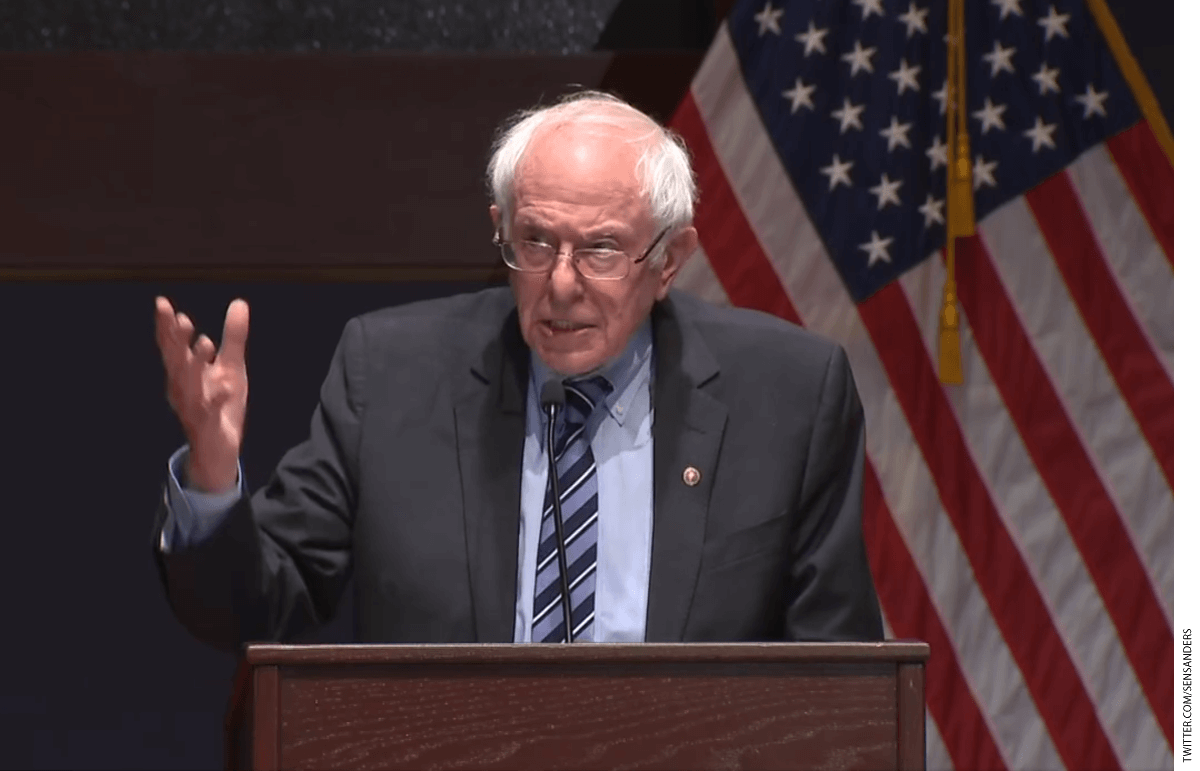
Almost everyone wants to raise teacher pay. That’s been true for as long as I can remember.
The push comes in various forms and from various places. From the unions, of course, whether at bargaining time, at state legislating-and-budgeting time, and when there’s extra money floating about, as in recent federal stimulus and recovery outlays for schools. The latest is a push by Congressional liberals—most conspicuously by Senator Bernie Sanders (I-VT), now chair of the Senate HELP Committee—to pump out enough dollars from Washington on a continuing basis to create a $60,000 floor under teacher salaries.
Nationally, the NEA projected the average public-school teacher salary in 2021–22 at $66,432, but it varies widely by state, by district, and by teacher seniority. Pay for starting teachers is in the low forty thousands—and would rise dramatically under anything akin to the Sanders proposal.
Almost nobody who agitates for more generous pay for teachers adjusts for the fact that most of them work a nine-month year, which means their salaries would be one third higher if paid for twelve months at the same rates.
And most discussions of teacher pay don’t get around to the generous benefits packages that nearly always accompany those salaries. The Commerce Department’s Bureau of Economic Analysis estimates that teacher benefits are equivalent to about 45 percent of base wages, which is a very big package indeed. Teacher.org notes that, “For a teacher making $64,133, that works out to almost $29,000 a year. Compare that to the 19 percent you might get working for just about any other employer that offers benefits.”
If you take a $60,000 nine-month salary “floor” and “annualize” it to $80,000, then add 45 percent worth of benefits, you get to $116,000, which surely ain’t hay. As veteran teachers rise above the “floor,” their pay packages become less and less hay-like.
What really gnaws at me, however, is a feature of U.S. education that also illustrates how “what might have been” far larger salaries for teachers was undone by our practice of hiring more teachers over the years rather than paying more.
Yes, I’ve rattled on about this before (though not since 2017). Back when I was growing up, the crude ratio of teachers to K–12 students across the U.S. was 1 to 27. Today, it’s 1 to 16.
Think about it: If the ratio had stayed at 1:27, then at current budget levels, today’s teacher salaries would be roughly 69 percent higher than they actually are. Yes, that’s without any mega-spending increases à la Senator Sanders. We’d be looking at average pay in the $112,000 range—still for a nine-month year and still not counting benefits.
But for decades now, at least six of them, we’ve been adding teachers and “improving” that ratio.
The reasons are obvious. Everyone wants smaller classes—teachers do, parents do—whether or not that yields achievement gains (a hugely contentious issue). Unions want more members. Colleges of education want more students. Administrators want more subordinates—and yes, we’ve been adding passels of administrators, too, not to mention the other non-teaching employees of U.S. public schools, who comprise about half the total K–12 workforce, vastly more than in other countries (more on this below).
So we’ve taken the huge increases over those decades in per-pupil spending on K–12 education and—instead of directing those dollars into better pay for the teachers we’ve got and using it to get and keep exceptionally able and effective teachers—we’ve used them to hire more people.
What if we had opted for quality rather than quantity?
Here’s another perspective: In round numbers, the U.S. spends more than $800 billion on public primary-secondary education. Divide that huge figure by 3.1 million public school teachers and you get $258,000. Which is to say, if all of what we spend on public education went straight into current salaries for the teachers we currently employ, we’d be looking at more than a quarter-million dollars per teacher per year.
Why we don’t spend more of our education budget that way is an issue worth pondering by those who want to boost teacher pay.
One last ponder. A really interesting but little noted recent paper from the Annenberg Center, by Harvard’s Virginia Lovison and Berkeley’s Cecilia Mo, based on a “survey experiment” with a national sample of more than 1,000 teachers, led the authors to conclude that, “[T]eachers value access to special education specialists, counselors, and nurses more than a 10 percent salary increase or three-student reduction in class size…. These novel estimates of teachers’ willingness to pay for student-based support professionals challenge the idea that inadequate compensation lies at the root of teacher workforce challenges and illustrate that reforms that exclusively focus on salary as a lever for influencing teacher mobility…may be poorly aligned to teachers’ preferences.”
This isn’t something that Senator Sanders wants to hear, much less teachers-union heads Randi Weingarten and Becky Pringle. They don’t want to make tradeoffs because they want more of everything. They take it as an article of faith that teachers are underpaid and that raising those salaries is teachers’ top priority. Smaller classes, too, of course, so more teachers, please, never mind that enrollments are declining. Plus innumerable additional support personnel. Plus ever-more-generous fringe benefits—and extra pay for any sort of after-hour, lunch-time, or summer work. (What sort of profession is that?)
In the real world we inhabit, however, namely an aging society with mounting public debts, how likely is this to happen? And wouldn’t our kids and our nation still be better served by focusing on quality?
Yet if past is prologue, quantity will continue to prevail. And salaries will struggle to keep pace with inflation.
Chester E. Finn, Jr., is a Distinguished Senior Fellow and President Emeritus at the Thomas B. Fordham Institute. He is also a Senior Fellow at Stanford’s Hoover Institution.
This post originally appeared on the Fordham Institute’s Flypaper blog.


